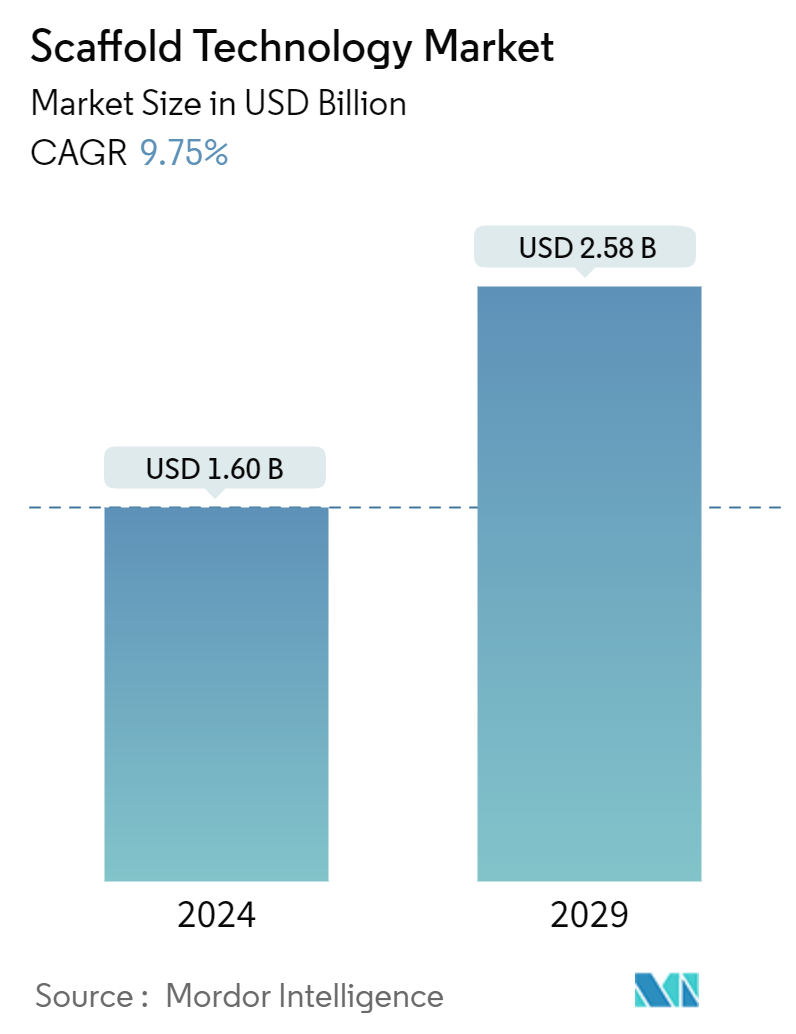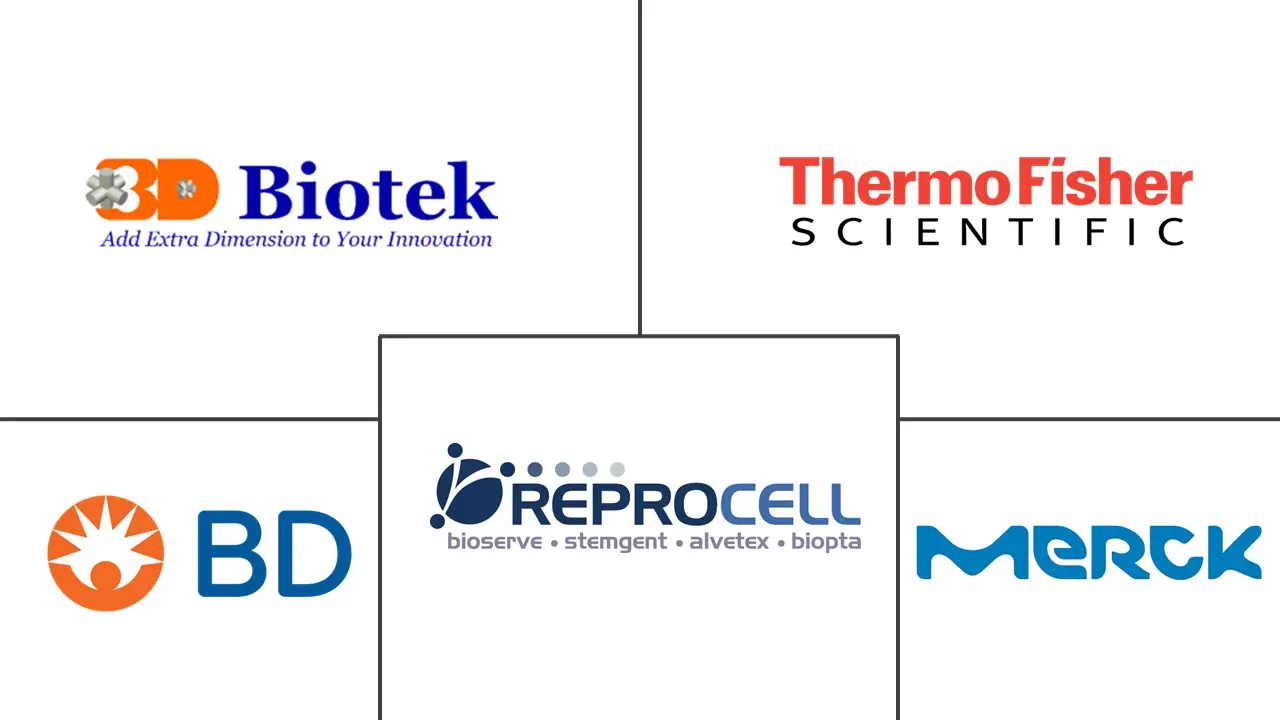Market Size of Scaffold Technology Industry

| Study Period | 2019 - 2029 |
| Market Size (2024) | USD 1.60 Billion |
| Market Size (2029) | USD 2.58 Billion |
| CAGR (2024 - 2029) | 9.75 % |
| Fastest Growing Market | Asia Pacific |
| Largest Market | North America |
Major Players
*Disclaimer: Major Players sorted in no particular order |
Scaffold Technology Market Analysis
The Scaffold Technology Market size is estimated at USD 1.60 billion in 2024, and is expected to reach USD 2.58 billion by 2029, growing at a CAGR of 9.75% during the forecast period (2024-2029).
The scaffold technology market is experiencing robust growth, driven by several key factors. The increasing demand for advanced translational research methods for 3D cellular systems enables effective study of complex biological processes and drug response and body reconstruction procedures, highlighting the need for sophisticated and accurate models. Additionally, advancements in tissue engineering technologies are fueling the market's expansion as they provide innovative solutions for creating functional tissues and organs. Together, these trends are accelerating the adoption of 3D cellular models in various research and clinical applications.
3D cellular models offer a more physiologically relevant environment resembling natural tissue architecture. These models enable researchers to study cell behavior, tissue development, and disease progression with greater accuracy. The demand for 3D cellular models drives the need for advanced scaffold technologies that can support the growth and organization of cells in three dimensions. For instance, a study published in the Journal of Medical Science in January 2024 shows that scaffold-based 3D cell culture models are becoming pivotal in examining cancer progression, drug responses, and tumor heterogeneity. Unlike traditional 2D cultures, these models offer a more physiologically relevant setting. This allows cancer cells to exhibit heterogeneity, develop metastatic traits, and acquire drug resistance akin to human tumors. In summary, scaffold technology plays a vital role in crafting advanced 3D cellular models. Thus, such models closely replicate the in vivo tumor microenvironment and hold vast potential in cancer research, and tissue engineering is anticipated to bolster the market's growth.
Further, scaffolds play a critical role in body reconstruction by serving as templates that guide tissue formation and support cellular growth. The increasing demand for body reconstruction and the need for advanced scaffolds are expected to drive the market's growth. For instance, as per the American Society of Plastics Research Report 2023, liposuction solidified its status as the leading body contouring procedure in the United States, witnessing a 7% uptick from the previous year, totaling 347,782 procedures. Similarly, tummy tuck (abdominoplasty) procedures saw a 5% rise, culminating in 170,110 procedures performed in 2023. Thus, increasing body reconstructive procedures is expected to boost the demand for scaffold technology, which is likely to drive the market's growth.
Technological advancements and product launches by market players are expected to increase their adoption, driving the market's growth. For instance, in September 2023, Zeus introduced advanced tubing for bioresorbable vascular scaffolds. The adaptable Absorv XSE empowers medical device manufacturers to venture into bioresorbable vascular scaffold (BRS) applications, extending beyond just coronary artery disease treatment. There is potential for broader applications spanning the cardiovascular system, peripheral vascular system, ENT, and other related domains. These advancements lead to the development of effective and customizable scaffolds that can cater to specific tissue types and repair needs and boost the demand for scaffold technology, driving the market's growth.
Thus, the growing need for accurate 3D cellular models, increasing demand for body reconstruction procedures, and rapid advancements in tissue engineering technologies are expected to drive the market for scaffold technology. However, the high cost of implementation and lack of consistency in generated results are anticipated to restrain the market's growth during the forecast period.

